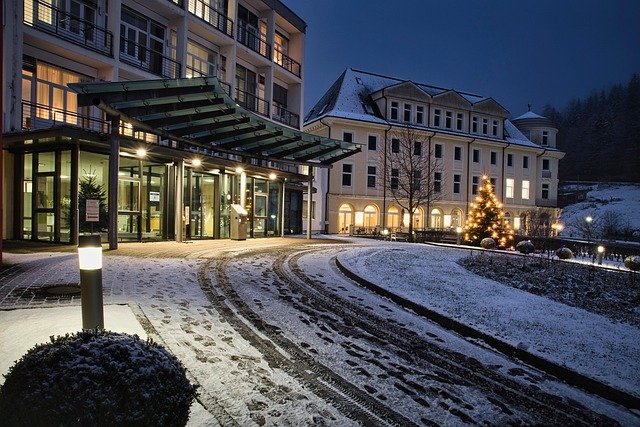Learn more about Unique Christmas Lights and Decoration
Christmas lights have evolved far beyond simple string lights, offering homeowners countless ways to create magical holiday displays. From innovative LED designs to smart lighting systems, today's Christmas decorations combine traditional charm with modern technology. Understanding the various options available helps you create a personalized holiday atmosphere that reflects your style while considering practical factors like energy efficiency and durability.

The world of holiday illumination has expanded dramatically in recent years, offering countless ways to brighten homes and outdoor spaces during the festive season. From classic warm white bulbs to programmable LED displays, the variety of available options allows everyone to create distinctive seasonal displays that capture their personal vision of holiday cheer.
What Makes Christmas Lights Unique: Exploring Designs, Colors, and Patterns
Modern holiday lighting stands apart through innovative technology and creative design approaches. LED technology has revolutionized the industry by introducing energy-efficient bulbs that last significantly longer than traditional incandescent options while offering enhanced color vibrancy. Smart lighting systems now allow users to control brightness, color transitions, and patterns through smartphone applications, creating dynamic displays that can change throughout the evening. Projection lights cast moving images of snowflakes, stars, or festive scenes onto home exteriors, eliminating the need for extensive manual installation. Icicle lights mimic natural ice formations, while net lights simplify the process of covering bushes and hedges uniformly. Rope lights provide flexibility for outlining architectural features, and curtain lights create elegant backdrops for windows or outdoor spaces. Color options extend beyond traditional warm white and multicolor schemes to include cool white, amber, blue, purple, and even color-changing RGB bulbs that cycle through the spectrum. Some designs incorporate specialty shapes like snowflakes, stars, candy canes, or miniature lanterns that add dimensional interest to displays.
Indoor vs. Outdoor Use: Choosing the Right Lights for Every Setting
Selecting appropriate lighting requires understanding the distinct requirements of different environments. Outdoor lights must withstand weather conditions including rain, snow, wind, and temperature fluctuations, necessitating waterproof or weather-resistant ratings typically indicated by IP (Ingress Protection) codes. Look for ratings of IP44 or higher for outdoor applications. These lights feature more durable construction with sealed connections and heavier-gauge wiring. Indoor lights prioritize aesthetic appeal and can utilize more delicate materials since they face no weather exposure. When decorating trees indoors, consider the tree size and branch density to determine appropriate light quantity, generally calculating 100 lights per vertical foot of tree height. Indoor applications also allow for battery-operated options that eliminate cord visibility concerns. Outdoor displays benefit from timer systems or photocell sensors that automatically activate lights at dusk, conserving energy while ensuring consistent operation. Extension cords and power sources require careful planning for outdoor installations, with ground fault circuit interrupter (GFCI) outlets providing essential safety protection against electrical hazards in wet conditions. Indoor spaces offer opportunities for creative placement on mantels, staircase railings, bookcases, and window frames where lights enhance architectural features without weather concerns.
Current Decorating Trends: How People Are Personalizing Their Holiday Lighting
Contemporary holiday decorating embraces both minimalist elegance and elaborate theatrical displays, reflecting diverse aesthetic preferences. Monochromatic color schemes using exclusively white, gold, or silver lights create sophisticated, cohesive looks that complement modern interior design. Conversely, maximalist approaches layer multiple light types, colors, and decorative elements for abundant visual impact. Sustainable decorating has gained prominence, with many choosing solar-powered outdoor lights or energy-efficient LED options that reduce electricity consumption by up to 90 percent compared to incandescent bulbs. Vintage-inspired Edison bulbs and retro large-bulb strings appeal to those seeking nostalgic aesthetics. Synchronized light displays programmed to music have become increasingly accessible through affordable controllers that coordinate multiple light strands to create choreographed shows. Natural integration involves wrapping lights around living plants, trees, and landscape features rather than artificial structures, creating organic illuminated environments. Indoor trends include illuminated garlands draped across furniture, lighted branches arranged in vases, and string lights suspended from ceilings to create starry overhead effects. Personalization extends to custom light arrangements spelling names, displaying meaningful symbols, or highlighting specific architectural features that hold personal significance.
Where to Find and Purchase Unique Christmas Lights: Trusted Sources and Buying Tips
Acquiring quality holiday lighting involves exploring various retail channels and understanding key purchasing considerations. Major home improvement retailers stock extensive seasonal lighting sections from October through December, offering hands-on product examination and immediate availability. Specialty lighting stores provide expert guidance and often carry premium or commercial-grade options not found in general retailers. Online marketplaces offer vast selection with detailed product specifications, customer reviews, and competitive pricing, though shipping times require advance planning. Seasonal pop-up stores dedicated exclusively to holiday decorations emerge in many communities, providing curated collections and inspiration. When evaluating products, examine bulb type, strand length, spacing between bulbs, wire color, and warranty coverage. LED lights cost more initially but offer superior longevity and energy efficiency, typically paying for themselves within two to three seasons. Check for UL (Underwriters Laboratories) or ETL (Electrical Testing Laboratories) certification marks indicating safety testing compliance. Read customer reviews focusing on durability, actual color appearance, and brightness levels, as product photography can misrepresent these qualities. Calculate total wattage requirements to avoid overloading electrical circuits, generally limiting connections to three standard light strands per outlet. Purchase extra bulbs or fuses when available, as replacement parts become difficult to locate mid-season. Consider storage solutions during purchase planning, as proper off-season storage in climate-controlled spaces significantly extends light lifespan by preventing moisture damage and wire degradation.
Creating memorable holiday lighting displays combines technical knowledge with creative vision, allowing spaces to reflect individual celebration styles. Understanding the distinctions between indoor and outdoor requirements, staying informed about current design trends, and making informed purchasing decisions ensures successful seasonal decorating that brings joy throughout the holidays. Whether choosing subtle elegance or bold statements, the expanding world of holiday lighting offers options for every preference and setting, transforming ordinary spaces into extraordinary festive environments that create lasting memories.




